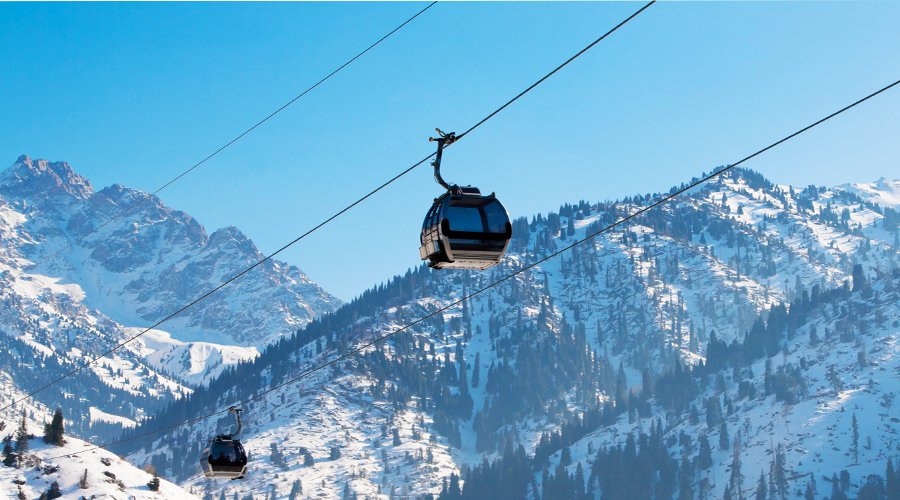An Amazing Ireland Tour
Ireland is an island in the North Atlantic. Clear from Great Britain to east by North Channel, the Irish Sea, and St. George’s Channel. Ireland is second – largest island of British Isles, the third – largest in Europe, and the twentieth – largest on Earth.
Politically, Ireland split in the Republic of Ireland which covers five – sixths of the island, and Northern Ireland, which is part of the United Kingdom, in the north – east of the island. In 2011, culture of Ireland was about 6.4 million, list the second – most dense island in Europe after Great Britain. Just under 4.6 million live in the Republic of Ireland and just over 1.8 million live in Northern Ireland.
The island’s geography contains much low – lying mountains around central plain, with several navigable river extending inland. The island has lush vegetation, a product of its mild but fickle climate which avoids acme in temperature. Thick woodlands covered the island until the Middle Ages. The amount of land that wooded in Ireland is about 11% of total, compared with European fair 35%.
There are twenty – six extant mammal species native to Ireland. The Irish climate is very cool and classified as oceanic. As result, winters are milder than expected for such northerly area. However, summers are cooler than those in Continental Europe. Rainfall and cloud cover are ample.
Earliest clue of human being in Ireland is dated at 10,500 BC. Gaelic Ireland had emerged by the 1st century AD and lasted until the First World War. The island was Christianize from the 5th century onward.
Following the Norman invasion in the 12th century, England claimed primacy over Ireland. English rule did not extend over whole island until 16th – 17th century Tudor conquest, led colonization by settlers. 1690’s, system of Protestant English rule designed to materially disadvantage Catholic majority and Protestant dissenters, and extended during 18th century.
With the Acts of Union in 1801, Ireland became a part of the United Kingdom. A war of independence early 20th century followed by partition of island, creating Irish Free State. Also became more sovereign over the following decades, and Northern Ireland, which remained a part of the United Kingdom. Northern Ireland saw much civil unrest from the late 1960’s until the 1990’s. This subsided following a political agreement in 1998. In 1973, the Republic of Ireland joined the European Economic Community while the United Kingdom, and Northern Ireland.
Irish culture has had a symbolic impact on other cultures, notably in the fields of literature. By mainstream Western culture, a strong primitive culture exists, as expressed through Gaelic games, Irish music, and the Irish language. Culture of island many features with Great Britain, including the English language, sports association football, rugby, horse racing, and golf.
Climate Of Ireland
The climate of Ireland is mild, moist and fickle with heavy rainfall and a lack of climate acme. Ireland’s climate is defined as a temperate oceanic climate, on the Koppen climate grade system, it shares with most of north – west Europe. The country earns generally warm summers and mild winters. Rather warmer area on nearby latitude, because lies north – eastern Atlantic Ocean, and result warmed by North Atlantic Current all year.
The influence of the North Atlantic Current also ensures the coastline of Ireland remains ice – free throughout the winter — unlike for example the Sea of Okhotsk and the Labrador Sea which are at a similar latitude. The climate in Ireland does not experience extreme weather, with tornadoes and similar weather features being rare.
The prevailing wind blows from the southwest, breaking on the high mountains of the west coast. Rainfall is therefore a particularly prominent part of western Irish life, with Valentia Island, off the west coast of County Kerry, getting almost twice as much annual rainfall as Dublin on the east (1,400 mm or 55.1 in vs. 762 mm or 30.0 in).
January and February are the coldest months of the year, and mean daily air climate fall between 4 and 7 °C (39.2 and 44.6 °F) during these months. July and August are the warmest, with mean daily climate of 14 to 16 °C (57.2 to 60.8 °F), whilst mean daily maximums in July and August vary from 17 to 18 °C (62.6 to 64.4 °F) near the coast, to 19 – 20 °C (66.2 to 68.0 °F) inland.
Festivals Of Ireland
1) Cat Laughs Comedy Festival
2) Cork Jazz Festival
3) Dublin Writers Week
4) Galway Oyster Festival
5) Galway Races
6) Lisdoonvarna Match Making Festival
7) National Ploughing Championship
8) Puck Fair
9) St. Patricks Festival
History of Ireland
Prehistoric Ireland spans a period from the first known evidence of human presence dated to about 10,500 BC until the emergence of “protohistoric” Gaelic Ireland at the time of Christianization in the 5th century. Christianity subsumed or replaced the earlier – polytheism and other forms of Celtic paganism by the end of the 7th century.
The Norman invasion of late 12th century marked the beginning of more than 800 years direct English rule and, later, British involvement in Ireland. In 1177, Prince John Lackland made Lord of Ireland by his father Henry II of England at Council of Oxford. The Crown did not attempt to assert full control of the island until the rebellion of the Earl of Kildare threatened English hegemony. Henry VIII proclaimed himself King of Ireland and also tried to introduce the English Reformation, which failed in Ireland. Attempts to either conquer or assimilate the Irish lordships into the Kingdom of Ireland provided the initial impetus for a series of Irish military campaigns between 1534 and 1603.
This period marked by Crown policy of plantation, involving the arrival of thousands English and Scottish Protestant settlers, and the consequent displacement of the pre – plantation Catholic landholders. As the military and political defeat of Gaelic Ireland became more pronounced in the early seventeenth century, sectarian conflict became a recurrent theme in Irish history.
Culture Of Ireland
The culture of Ireland includes customs and traditions, language, music, art, literature, folklore, cuisine and sports associated with Ireland and the Irish people. For most of its recorded history, Ireland’s culture has been primarily Gaelic. Also influenced by Anglo – Norman, English and Scottish culture.
The Anglo – Normans invaded Ireland in the 12th century, while the 16th/17th century conquest and colonization of Ireland saw the emergence of the Anglo – Irish and Scots – Irish (or Ulster Scots). Today, there notable cultural of Catholic and Protestant (especially Ulster Protestant) background, between travelers and the settled population.
Due to large – scale emigration from Ireland, Irish culture has a global reach and festivals such as Saint Patrick’s Day, Halloween and The Twelfth of July are celebrated all over the world. Irish culture has to some degree been inherited and modified by the Irish diaspora, which in turn has influenced the home country.
Though there are many unique aspects of Irish culture, it shares substantial traits with those of Britain, other English – speaking countries, other predominantly Catholic European countries, and the other Celtic nations.













